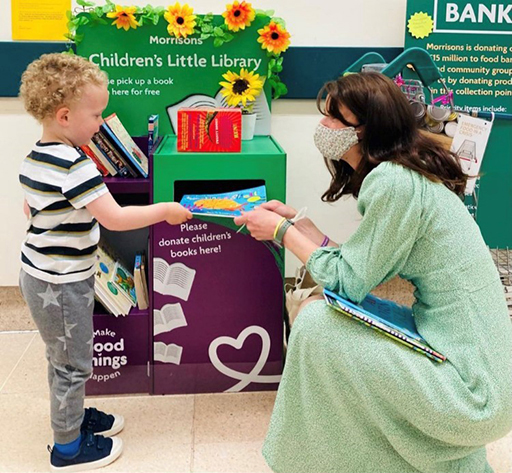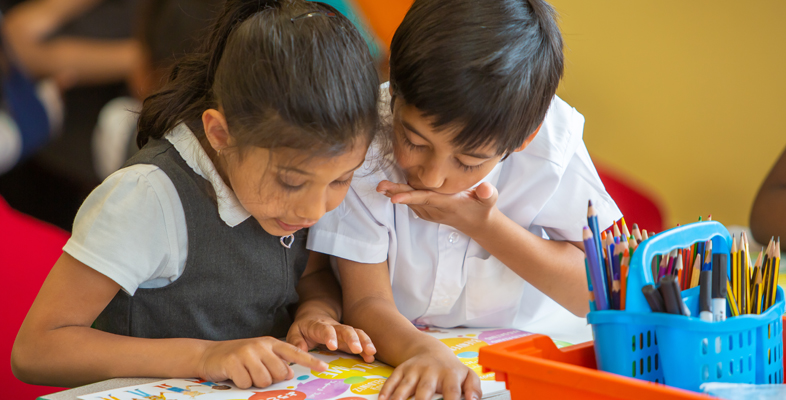9 Text access
Access to books is vitally important. A 20-year international study reveals that the presence of books in the home is a significant predictor of children’s future academic success (Evans et al., 2010). This is likely to be as a result of role modelling on the part of parents and the related talk about texts in the home. Parents and families who have books in the home are indicating to their children that reading matters, and through sharing their pleasure and engagement in all kinds of texts, they will be demonstrating the value of reading in their lives (Mackey, 2021). Furthermore, the presence of books in the home will trigger conversations which support children’s wider understanding of the world.

Books, which bring new ideas, new experiences, new vistas, and new information into the home, extend possible conversational topics beyond what the family members can directly experience in their lives.
However, for some children and families, access to books is not an easy option. Perhaps you know children who do not have ready access to books at home. In the UK, a survey suggests that over 380,000 children and young people do not have a single book of their own (NLT, 2019). Reasons for this are varied, including for some families financial constraints.
Globally, due to school closures in 2020–2021, around 214 million children (1 in 7) missed at least 75% of their in-person learning (UNICEF, 2021). Internationally, the innovations that followed to enrich book access were phenomenal and show what is possible and needed. Schools, libraries, literacy organisations and charities redoubled their efforts to bridge the gap, to offer books, to give hope and re-ignite all young people’s interest in reading. Schools found creative ways to increase access, for instance running book swaps, and many now hold these regularly. Local libraries increased their e-book loans and widened their digital offer and events. They also supported digitally-excluded families by working in partnership with health and social care services, delivering home library services and books through foodbanks. The supermarket chain Morrisons, working with the author Rebecca Smith and The Open University, launched a book donation and exchange scheme called Morrisons Little Library.
Recent research indicates it is not just access to books that makes a difference but also ongoing support (de Bondt, Willenberg and Bus, 2020). The research found that book gifting programmes had a statistically significant effect on children’s literacy-related behaviour and skills, and that when book sharing was demonstrated multiple times with supporting information, this made more impact, particularly on those families from low socio-economic groups.
Activity _unit8.9.1 Activity 5 Doorstep Library: community reading volunteers
In London, the charity Doorstep Library is committed year-round to sharing the joy of reading with children living in some of the capital’s most economically deprived areas. Volunteers, with backpacks full of books, visit homes to read stories to children on their doorsteps, and support parents by connecting them to cultural, social and support services.
Watch Video 1, an award-winning video about the work of Doorstep Library. As you watch make a brief note about:
- the key features of the support the volunteers offered to this family
- what tempted the girl to find pleasure in reading.

Transcript: Video 1
[MUSIC PLAYING]
[MUSIC PLAYING]
[TEXT ON SCREEN: 1 in 3 children have never been read a bedtime story]
[TEXT ON SCREEN: Bring the magic of reading to families in disadvantaged areas. Volunteer with Doorstep Library.]
[MUSIC PLAYING]
Comment
The Doorstep Library volunteers visited the children in their home, shared information about free opportunities in the wider community with the mum and supported her in taking an active role in Reading for Pleasure with her children. Perhaps the visitors were also helped by not being framed by school as an institution. The key volunteer took time to get to know the girl and then hunted for books on space to tempt her. Some of these the girl could read to herself and some needed to be read to her, enabling the volunteer to model reading in front of her mum. The books not only triggered talk about the girl’s long-term ambitions, but also prompted imaginative book play which she clearly enjoyed.
In responding to educational inequalities that arise from issues of book access, other charities such as Reach Out and Read in the USA promote children’s book ownership through various schemes. Another example is the Boston-based charity and network Little Free Library [Tip: hold Ctrl and click a link to open it in a new tab. (Hide tip)] , which aims to be a worldwide catalyst for building local communities and making books widely available.
The annual Summer Reading Challenge run by the UK Reading Agency, which through its digital offer is now more internationally accessible, is another opportunity to get children reading. Children read what they choose during the holiday (e.g. audio books, e-books, non-fiction, graphic novels) and are supported by the online book sorter, the website, and/or their local library. Children who are blind, partially sighted or with a print disability, can borrow books through the Royal National Institute for the Blind.

Box _unit8.9.1 Optional resource
This resource Finding and Funding Quality books offers advice on how to seek external income and source new books to support Reading for Pleasure.
